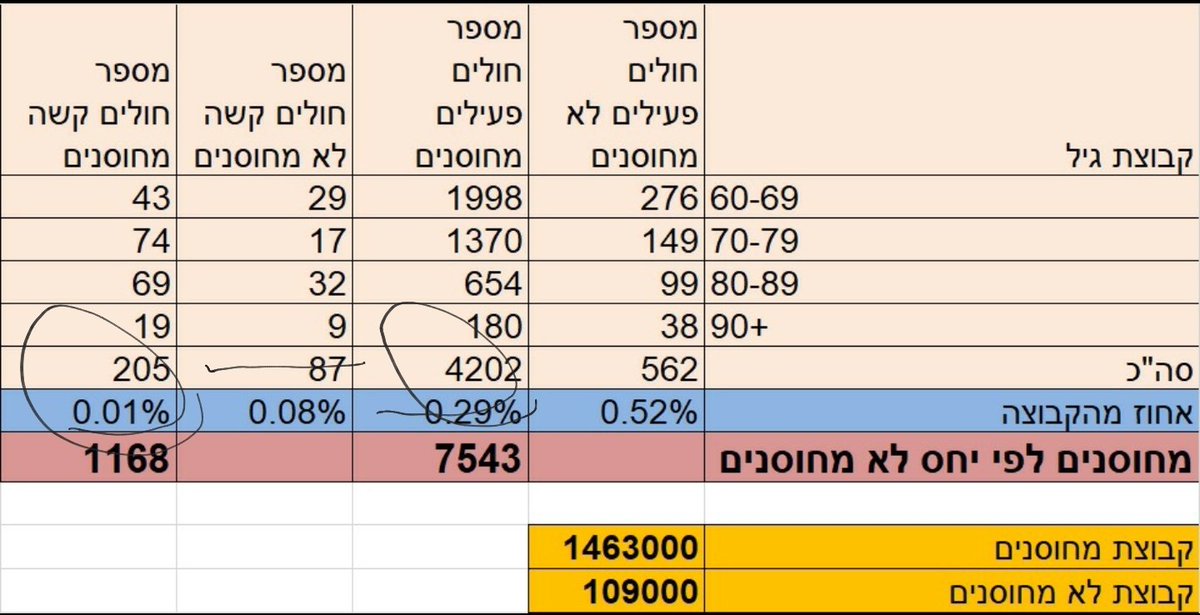
Interesting data about the performance of boosted as a function of time. Y: protection compared to 2 doses. X: days from booster.
There is an increase in protection with time after day 7. This reduces the chance of a behavioral effect (but not completely mitigate it)
There is an increase in protection with time after day 7. This reduces the chance of a behavioral effect (but not completely mitigate it)

These results are more puzzling. From right to left: days, # cases, # severe. Top line 💉💉. Bottom: 💉💉💉 >10days 

Why puzzling? Because rate of (boosted severe/)(boosted cases) is ~5%. We saw a similar rate earlier in with only 2nd dose. Don't know how to explain that. 

If booster indeed gives 4× increase in transmission blocking, we talk about 80 to 85% after booster. But everything is super preliminary.
The slides are from the Israeli MoH.
The slides are from the Israeli MoH.
• • •
Missing some Tweet in this thread? You can try to
force a refresh










